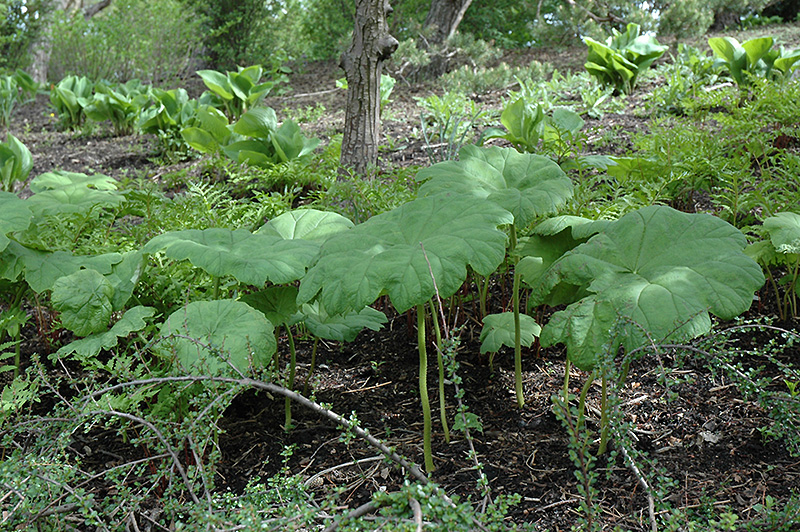PLANTFINDER
search. discover. plant.
Plant Height: 18 inches
Flower Height: 4 feet
Spread: 3 feet
Sunlight:
![]()
![]()
Hardiness Zone: 4
Other Names: Rodgersia tabularis, Shieldleaf Rodgersia
Description:
Dramatic large dinner plate-sized foliage has ruffled edges and prominent veins; subtle astilbe-like spikes of flowers; coarse leaves complements finer foliaged plants in the landscape; happiest in mostly shade with lots of moisture
Ornamental Features
Astilboides is primarily valued in the landscape or garden for its broadly spreading habit of growth. It features airy spikes of creamy white flowers rising above the foliage from early to mid summer. The flowers are excellent for cutting. Its attractive enormous lobed leaves remain emerald green in color throughout the season.
Landscape Attributes
Astilboides is an open herbaceous perennial with a ground-hugging habit of growth. Its wonderfully bold, coarse texture can be very effective in a balanced garden composition.
This is a relatively low maintenance plant, and is best cleaned up in early spring before it resumes active growth for the season. Gardeners should be aware of the following characteristic(s) that may warrant special consideration;
- Insects
Astilboides is recommended for the following landscape applications;
- Mass Planting
- General Garden Use
- Groundcover
- Naturalizing And Woodland Gardens
- Bog Gardens
Planting & Growing
Astilboides will grow to be about 18 inches tall at maturity extending to 4 feet tall with the flowers, with a spread of 3 feet. Its foliage tends to remain dense right to the ground, not requiring facer plants in front. It grows at a medium rate, and under ideal conditions can be expected to live for approximately 10 years. As an herbaceous perennial, this plant will usually die back to the crown each winter, and will regrow from the base each spring. Be careful not to disturb the crown in late winter when it may not be readily seen!
This plant does best in partial shade to shade. It is quite adaptable, prefering to grow in average to wet conditions, and will even tolerate some standing water. It is not particular as to soil pH, but grows best in rich soils. It is somewhat tolerant of urban pollution. Consider applying a thick mulch around the root zone over the growing season to conserve soil moisture. This species is not originally from North America. It can be propagated by division.
A NetPS Plant Finder tool

